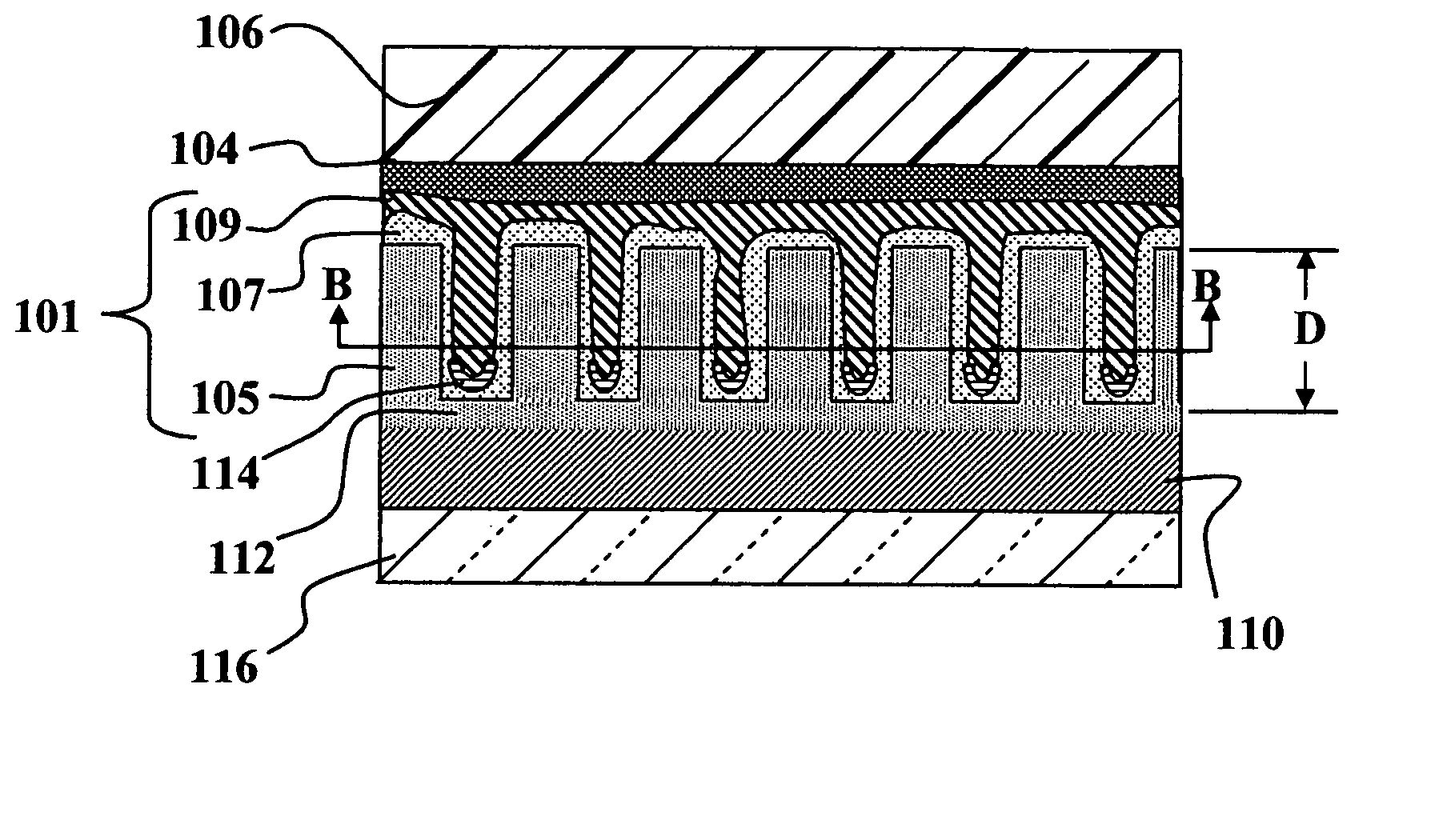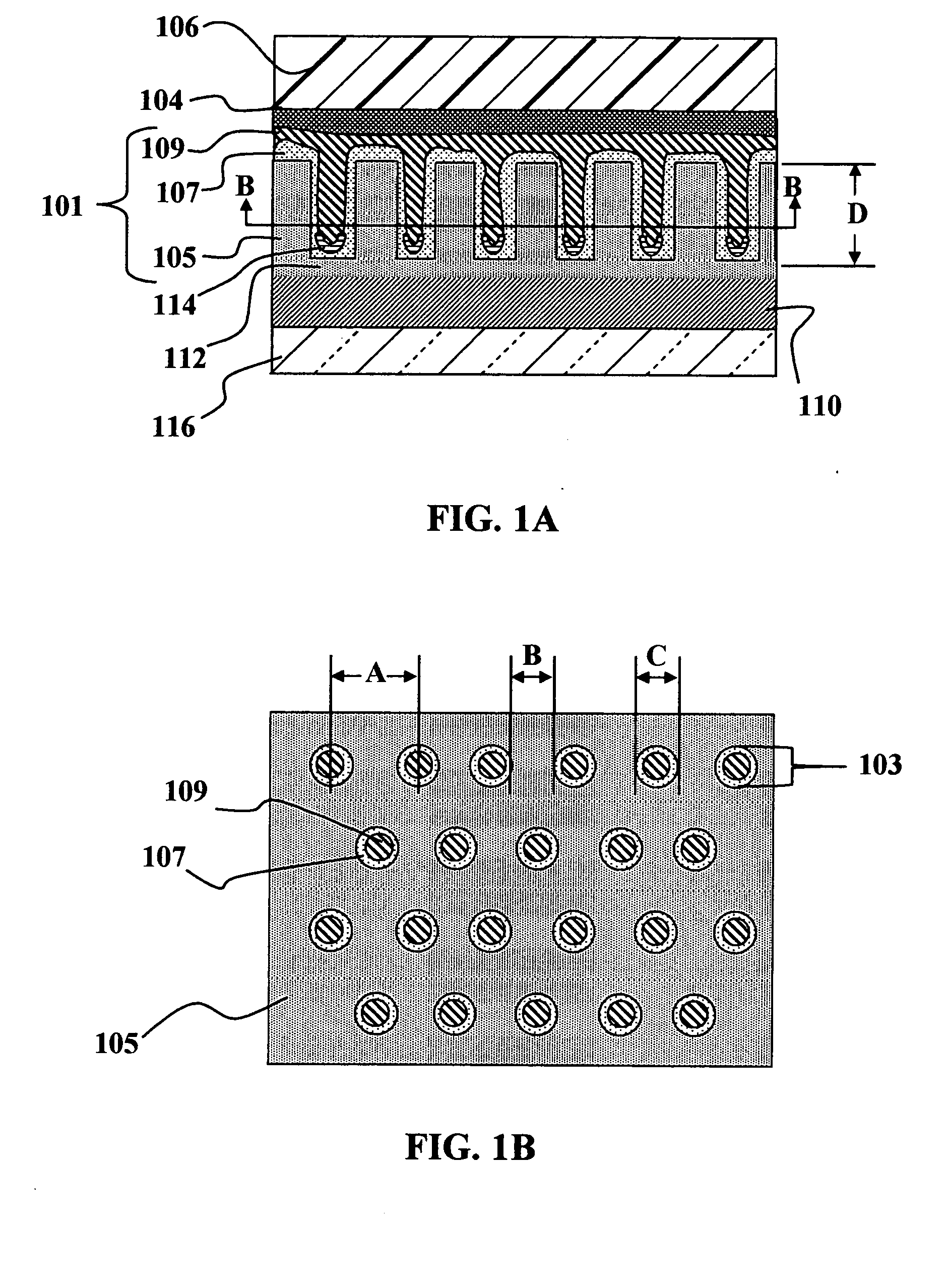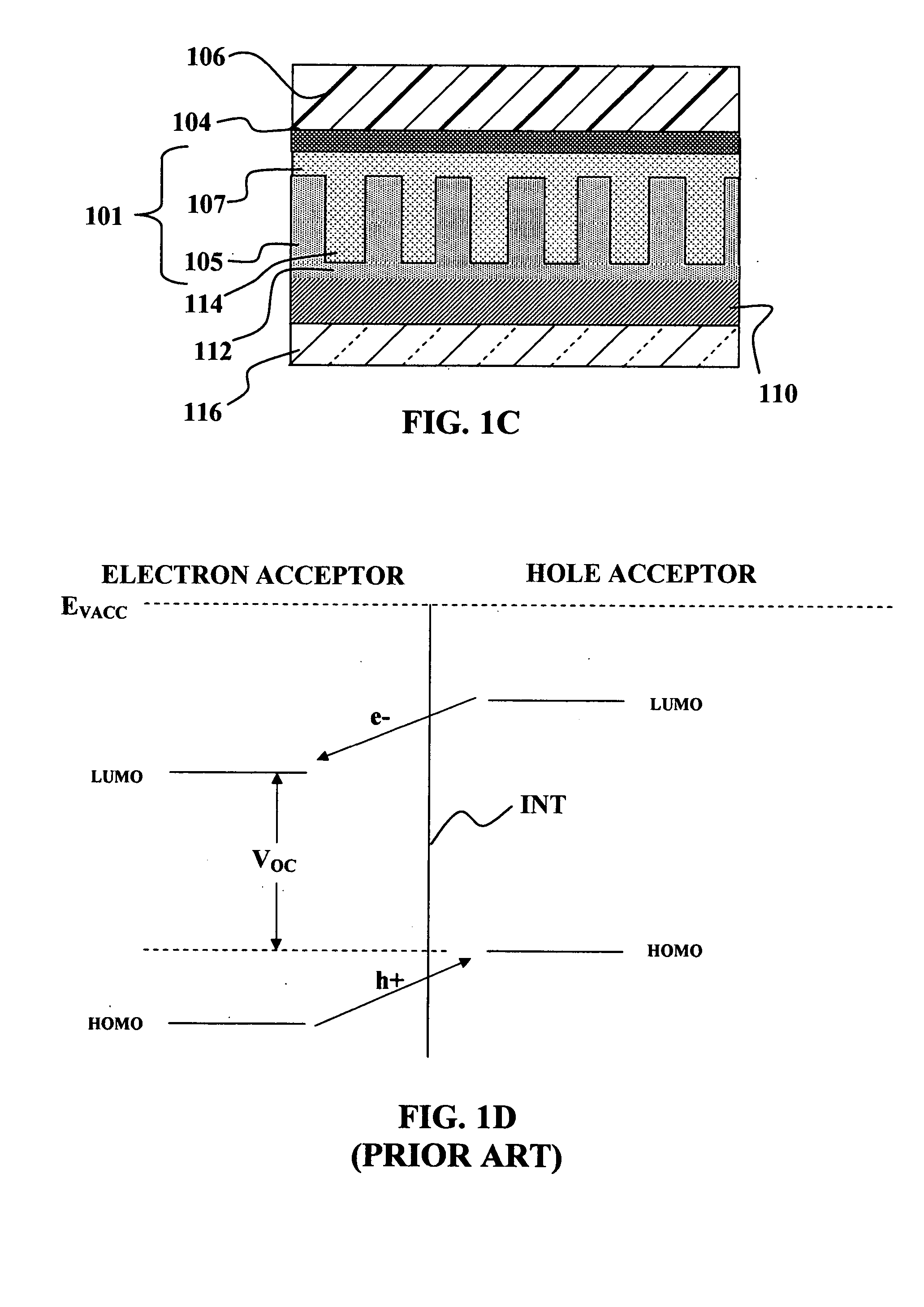Photovoltaic devices fabricated from nanostructured template
a photovoltaic device and nanostructure technology, applied in the field of nanostructured photovoltaic devices, can solve the problems of reducing the hole and electron transport efficiency, affecting the efficiency of photovoltaic devices, and unable to meet the requirements of the cell, etc., and no known effective way to seal the cell
- Summary
- Abstract
- Description
- Claims
- Application Information
AI Technical Summary
Problems solved by technology
Method used
Image
Examples
Embodiment Construction
Contents
[0020] I. Glossary
[0021] II. General Overview
[0022] III. Photovoltaic Device
[0023] IV. Photovoltaic Device Fabrication
[0024] V. Alternative Embodiments
[0025] VI. Conclusion
I. Glossary
[0026] The following terms are intended to have the following general meanings as they are used herein:
[0027] The article “A”, or “An” refers to a quantity of one or more of the item following the article, except where expressly stated otherwise, e.g., “a single” layer.
[0028] Active Layer generally refers to the layer within a photovoltaic or solar cell device where conversion of radiant energy to electrical energy takes place.
[0029] Anodization refers to the formation of a film, such as an oxide, on a conducting material, such as a metal, by electrolysis.
[0030] Array refers to a regular arrangement of objects or structures over a scale of distance greater than some characteristic dimension of a typical structure or object in the array.
[0031] Buckminsterfullerene or Fullerene: ref...
PUM
| Property | Measurement | Unit |
|---|---|---|
| diameter | aaaaa | aaaaa |
| diameter | aaaaa | aaaaa |
| LUMO | aaaaa | aaaaa |
Abstract
Description
Claims
Application Information
 Login to View More
Login to View More - R&D
- Intellectual Property
- Life Sciences
- Materials
- Tech Scout
- Unparalleled Data Quality
- Higher Quality Content
- 60% Fewer Hallucinations
Browse by: Latest US Patents, China's latest patents, Technical Efficacy Thesaurus, Application Domain, Technology Topic, Popular Technical Reports.
© 2025 PatSnap. All rights reserved.Legal|Privacy policy|Modern Slavery Act Transparency Statement|Sitemap|About US| Contact US: help@patsnap.com



